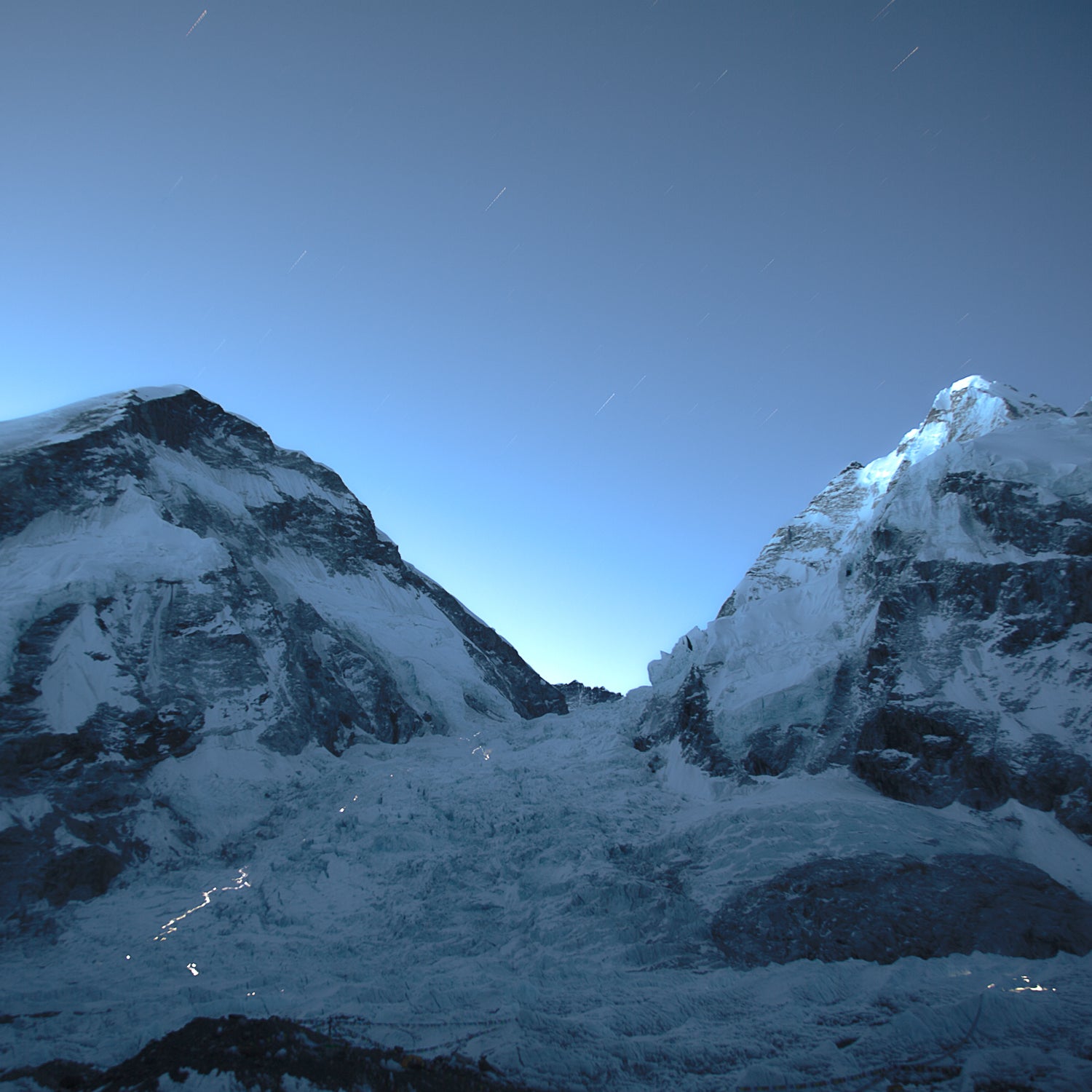After the Chinese government shut down the north side of Everest, �����ԹϺ��� spoke to Adrian Ballinger, of . After last year’s avalanche in the Khumbu Icefall, Adrian decided to move his expeditions to the north side because he believed its risks to be more manageable than those of the south side.
�����ճ����ٷ�:��When did you first hear that the Chinese government might close Everest to climbing this season?
BALLINGER:��There’s been a huge amount of confusion. It sounded initially like it might be a five to ten day closure and then the mountain would open back up. Today, Nima Tsering, the head of Tibet Mountaineering Association (TMA), came to base camp and he had a very clear message: this mountain and all mountains are closed in Tibet for the season. That’s Everest, Cho Oyu, etc.
What reasons did they give for closing the mountain?
They expressed that their geologists in Beijing have predicted that there’s a greater than 50 percent chance of an earthquake happening again of similar magnitude. We just got the latest and their guess is that there’s a 54 percent chance of an earthquake of a magnitude 6 or greater and a 7 percent chance of a 7 or greater. The second reason they gave us is about solidarity with those in Nepal. They felt that Sherpa workers should go home and be with their families. My Sherpas didn’t think they would even be able to get home and do effective work on their houses, so they wanted to stay. They wanted to show the world that there’s a safe way to climb Everest. So there’s disappointment among both the Sherpa and climbers.
Do you think the Chinese handled this properly?
They’ve been relatively forward-thinking and open about it and I think they’re making a fair decision. I wish that the decision to go or not was made by teams—by guides and members and Sherpa—and not national governments, but this is unique situation. What the Chinese didn’t handle well was that they made a few initial promises and then they called expedition leaders together and took it all back. At first they said that permit fees would be refunded, initially saying they’d refund $5,000 per member, which is the majority of it, and they said that Sherpa, whose permit costs $3,000, would be free next year. They changed their minds and now have said that members would get $500 back and Sherpas would get nothing, and we’d have to pay again for Sherpa permits next year. That caused some serious negativity here.
We were told that now is not the time for us to try and help in Nepal, that we could be of much better use later once the infrastructure is back up. So we thought we might climb if we were allowed. I think we would have stayed.
How many people and teams were still on the north side at the time of the meeting with the TMA?
I would say somewhere in the vicinity of 150 Western climbers and at least 150 or more Sherpa. There was also a large team of Chinese climbers and Tibetan Sherpas, but they left immediately after the earthquake and went to Shigatse, which is the nearest town. They had at least 30 Sherpa and 20 climbers so I would say there were 200 climbers and 200 Sherpa on the mountain at one time. It was busy. Nima Tsering said there were 25 registered teams on the north side.
What if it had remained open? Do you think teams would be climbing?
My best guess is at least half of the teams would have stayed and climbed. I know certain teams had Sherpa who had lost family and they weren’t going to stay. Asian Trekking was very clear that they’d had losses and they were going home. I think others would have stayed.
We were sort of at a loss. We were trying to figure out if we could mount an effective relief response and what our team could do. We made a $10,000 financial donation to the Red Cross immediately. But we were told that now is not the time for us to try and help in Nepal, that we could be of much better use later once the infrastructure is back up. So we thought we might climb if we were allowed. I think we would have stayed.
Did your team suffer any losses?
None of our Sherpa had family members who were injured or killed, but nine out of twelve of them have had serious destruction to their homes. They’ve been able to communicate with their families in Phortse. Some are already trying to organize reconstruction of their homes, but of course there are limited supplies in the Khumbu and a shortage of stone workers. Most of my Sherpas are planning on living in Kathmandu for the summer, which is what they usually do anyway.
There’s usually a lot of movement in the Icefall just above the south-side Base Camp anyway, and obviously big avalanches are possible, but did you ever think an avalanche of that scale was possible?
We made the decision to move north for a reason: we thought the risk of avalanche in the Icefall was too great. But none of us thought an earthquake would cause such a destructive avalanche at Base Camp. And I’ve been hit with powder clouds in Base Camp three times since 2008—twice in 2009, and once in 2010, so I knew it was possible.
What was it like for you on the north side?
We’re camped in this big broad valley on the north side. I’ve never been in an earthquake of this size before. I was definitely scared. It went on for minutes. The ground was moving constantly and it was changing pace from violent to slow. I thought that maybe the ground would just open up and we’d fall into a crevasse, like in the movies. The irrational side of my brain thought we might be swallowed by the earth.
There was a big rock fall off a 6000-meter peak, but we’re surrounded by a massive morainal ridge and in a big, flat, mile-wide valley. There are no rocks bigger than a basketball down here, so it doesn’t seem like there’s ever been a rock fall that has sent big boulders down into this valley.
There were climbers at base camp, more than 100 at advanced base camp, four Sherpas at 8,300 meters, and two Sherpas at the North Col, and no one was injured. This is a big mountain, and there’s still risk, but the risk is wholly different on this side. I’m glad I was here.
How are your clients and Sherpas feeling about the cancellation?
All my clients have been shut down on Everest at one point or another due to factors that were out of their control. And their level of understanding is something I’m very impressed by. The team’s Sherpas have expressed their willingness to climb. They really are scared that people are going to stop coming to Everest because of what happened these past two seasons. I think it’s easy to sit at home and think these people are selfish for trying to climb, but I truly think the picture is more complicated than that. The Sherpas here can’t get home to their families, so their desire to climb is really not that far fetched, and I think their hearts are in the right place.
I bet a bunch of the clients will come back next year and try again. Even with the last two seasons, I expect this business and general industry will continue to grow. What I’m afraid of, and I don’t know quite how to put this, is I’m afraid that the wrong people will come to climb. I hope the ones that come are the ones that spend years building up to it and come here with a passion. Those are the ones I hope come, but also the ones that might be put off by what’s been happening. I hope that’s not the case.


